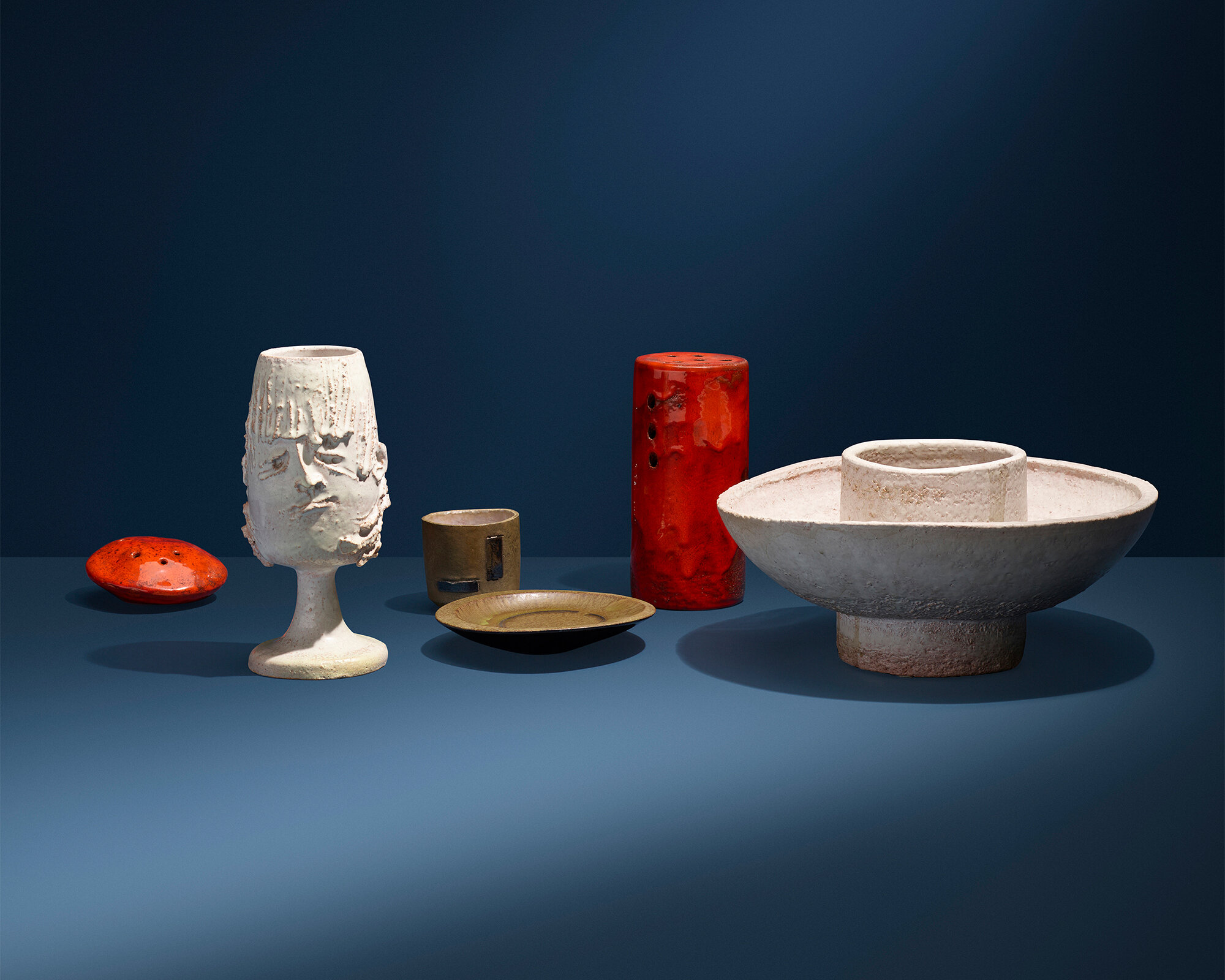384
384
Italy, 1952
base metal 16 dia in (41 cm)
base metal 16 dia in (41 cm)
estimate: $2,000–3,000
follow artist
provenance: Galleria Giuseppe Finocchiaro | Private Collection, Italy
This work will ship from Chicago, Illinois.
An acclaimed sculptor, ceramicist, furniture and jewelry designer, Renato Bassoli expressed a rigorous passion for living. Deeply rooted in humanism, nature, and above all, the celebration of life, Bassoli’s artistic philosophy fueled his lengthy career. From hot-enameled ceramic works and steel constructions to thoughtfully sculpted clay sculptures and precious jewels, Bassoli drew from the elements to create an exuberant and expressive body of work.
Bassoli drew from the elements to create an exuberant and expressive body of work.
Born in Milan in 1915, Bassoli would spend most of his early life in the Lombardy region. From 1937 to 1948, he studied at the Accademia di Belle Arti di Brera under famed artists Aldo Carpi and Achille Funi and later at the Scuola del Castello in Milan. However, his studies were interrupted during World War II when he was interred in a prison camp in Germany. His experience in the camp had a lasting influence on his work, visible in both his material selections (Bassoli worked primarily in clay and metal) and in the deeply sincere, and humanistic approach to his artistic practice.
At the beginning of his career, Bassoli worked as a graphic artist and designed theater sets. These early explorations would later evolve into an dedicated concentration on the creation of ceramics. Initially, Bassoli’s output depicted mostly the human figure, but he eventually focused on exploring and representing the different shapes of nature. His elemental and generously glazed forms drew parallels to the work of Lucio Fontana for their thoughtful explorations of space and pierced pass-throughs. Works from his Sasso series are particularly tactile, like gently worn river stones and red-hot glowing embers. Created almost exclusively for and by the Il Sestante gallery in Milan, Bassoli’s ceramic works were featured alongside designs by Ettore Sottsass and Giò and Arnaldo Pomodoro.

During the mid-1950s, Bassoli started experimenting with jewelry, mixing clay, precious and non-precious metals, and other materials to form small-scale sculptural compositions. By the 1960s, he narrowed his focus to sculpture, where he developed a unique style for representing the human body in everyday settings using a lively, immediate, and current language to create faithful and spirited compositions. His sculptures often portray embracing couples with ironic attitudes, paternal father-and-son postures of great affection, and laborers commuting toward their factories. Bassoli’s later sculptures become more elemental and feature solitary figures in sparse metal landscapes, similar to the theater designs he created early in his career.
The collection offered here encompasses the breadth of Bassoli’s oeuvre and captures his noble, artistic spirit.
Reflecting on his artistic philosophy later in life, Bassoli affirmed “I endeavor always to do my best, and above all, I try to create things and objects that are good – technically prefect and naturally pleasing to the eye”. This underlying theme is apparent throughout his rather diverse career, and the collection offered here encompasses the breadth of Bassoli’s oeuvre and captures his noble, artistic spirit.
Renato Bassoli 1915–1982
Born in Milan, Italy in 1915, Renato Bassoli was a celebrated sculptor, ceramicist, and furniture designer. He studied at the Brera Academy from 1937 through 1948 and later the Scuola del Castello. His body of work is deeply rooted in humanism and the celebration of life. After World War II, he moved to Paris where he worked until his death in 1981.
Auction Results Renato Bassoli